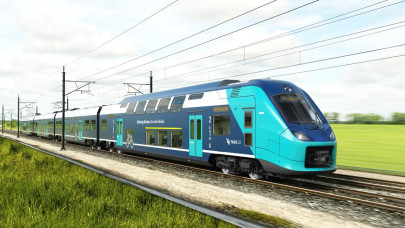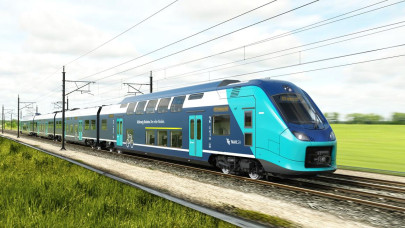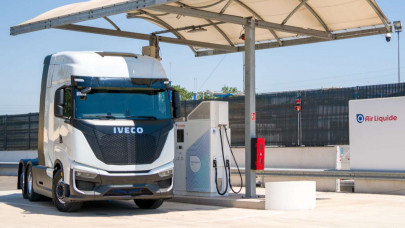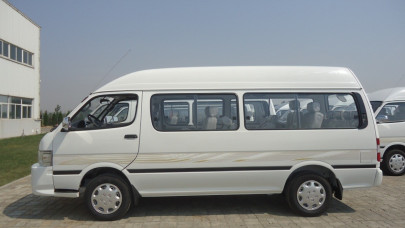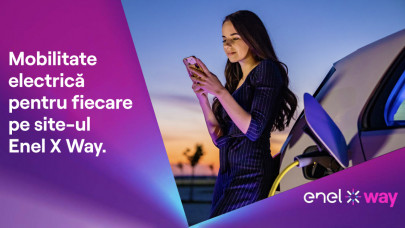The hydrogen-powered Coradia Stream is the first direct zero-emission train powered by hydrogen fuel cells made for Italy, with a total capacity of 260 seats and a range of over 600 km.
The event follows the agreement signed by FNM and Alstom in November 2020 to supply Trenord with six hydrogen fuel cell trains, with an option for eight more. The introduction of the hydrogen train is part of the H2iseO Hydrogen Valley project.
Promoted by FNM, FERROVIENORD, and Trenord, the H2iseO project aims to develop an economic and industrial hydrogen supply chain in Valcamonica, starting from the mobility sector, initiate the energy conversion of the territory and contribute to the decarbonization of a significant part of local public transport. It is a highly innovative project that foresees, among other things, the construction of three plants for the production, storage, and distribution of renewable hydrogen without CO2 emissions (in Brescia, Iseo, and Edolo), as well as the commissioning of 40 hydrogen buses, to replace the entire fleet used today by FNM Autoservizi.
The new hydrogen-powered trains are based on Alstom's single-level Coradia Stream regional train model, intended for the European market and already produced by Alstom in Italy. The hydrogen-powered Coradia Stream can operate on non-electrified lines as a replacement for trains using fossil fuels and offers comfort and quiet features comparable to other electric Coradia models, with a range of over 600 km.
The train was created and produced at Alstom factories in Italy, namely the Savigliano plant for development, certification, production, and testing, the Vado Ligure plant for equipping the "engine car" in which the technologically innovative hydrogen-related part is installed, the unit from Sesto San Giovanni for components and from Bologna for the development of the signaling system.
"Today's event is a milestone in the journey started by the FNM Group in November 2020 with H2iseO. This is a deeply innovative project with social, economic, geographical, environmental, and mobility implications and has great sustainability value as it allows us to use the already existing railway infrastructure by putting new hydrogen trains into operation, which are able to reduce emissions, contribute to the decarbonization of mobility in the area and ensure greater comfort for travelers. In addition, the creation of a region based on hydrogen, from an economic and industrial point of view, starting with - but not limited to - rail mobility, will have positive effects on the economy and employment in the area", explained the president of the FNM Andrea Gibelli.
The hydrogen train will be the protagonist of the first "hydrogen valley" in Italy, located in Valcamonica along the non-electrified line Brescia-Iseo-Edolo, and will replace the current diesel trains.
"We are proud to be here today together with FNM to present the first hydrogen-powered train to enter service in the Italian rail system. A project that represents a significant advance for the entire railway sector and confirms Alstom's role in anticipating and shaping the future of mobility with new, highly sustainable transport solutions", said Michele Viale, General Manager of Alstom Italia and President and CEO of Alstom Ferroviaria.
"FERROVIENORD is working intensively to build the related infrastructure," stressed FERROVIENORD President Fulvio Caradonna, "in preparation for the test phase of the train and the commercial service. Everything is done with the greatest attention to safety and sustainability, and it couldn't be otherwise. The development of projects and the execution of works follow strict procedures from this point of view."
"We are proud to be here today together with FNM to present the first hydrogen-powered train to enter service in the Italian rail system. A project that represents a significant advance for the entire railway sector and confirms Alstom's role in anticipating and shaping the future of mobility with new, highly sustainable transport solutions", said Michele Viale, General Manager of Alstom Italia and President and CEO of Alstom Ferroviaria.
Alstom has been a supplier of trains and maintenance services to the FNM Group for over 15 years.
"Heavy duty mobility is the first field of application for hydrogen. Inaugurating the use of this technology in a field that connects, by vocation, means that its value will not only materialize in the individual project but will also spread to other fields. I think about the industries and services that the hydrogen grid can reach. This is what we aim to achieve with H2iseO: we want it to be scalable, beyond rail and bus mobility. H2iseO is a step in a longer journey: in recent years we have progressively renewed the fleet in Valcamonica, switching from old diesel cars to more modern, more efficient, and less polluting ATRs, and finally to hydrogen. What does this mean? What we will pass through small villages releasing water vapor instead of the black smoke of a few years ago", says Marco Piuri, CEO of Trenord and general director of FNM.
The intermediate car called the "Motor car" in which the heart of the hydrogen technology is located is the main source of energy. Energy is provided by combining hydrogen (stored in tanks) with oxygen from the outside air, without emitting carbon dioxide into the atmosphere. High-performance lithium-ion batteries store the energy, which is later harnessed in the acceleration phases to support the action of the hydrogen cells and ensure fuel economy.


